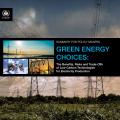Policy-driven institutions such as national development banks (NDBs) and national green funds (NGFs) attract a growing interest to provide grants, credit-enhancement instruments or lend directly to project proponents in specific green sectors, with billions of dollars allocated by governments to support these interventions.
As part of ongoing efforts to better understand their comparative effectiveness to deepen national financial systems, the paper discusses the role of NGFs in catalysing institutional innovations and facilitating access to long-term affordable finance for green, low carbon and climate resilient investment. It argues that the key added value of NGFs might rest in their capacity to foster institutional innovations and partner with other financial and regulatory institutions to increase the diversity and depth of local financial markets in order to enhance the domestic supply of green finance.
This study seeks to provide new perspectives and proposals on the relationship between institutional investors and sustainable development in the context of a more sustainable financial system. The report’s key messages advocate for systemic and dynamic policy reform that better aligns institutional investors with policy goals for sustainable development. Seven critical policy objectives that hold the strongest potential for positive change are explored in the report together with fourteen policy tools to get us there.
The paper presents a theoretical model of a different and more sustainable role for financial agents and markets that is justified by systematic philosophical arguments and reasoning. It is normative rather than descriptive, and does not review how the financial system currently functions, but rather how it ought to function in the future. The goal is to identify a new direction for finance which the majority of commentators will recognize as both desirable and achievable.
An efficient and resilient regulatory regime must not only deal competently with the financial system that exists currently; it must also have adaptive capacity to deal competently with the system that is emerging.
This working paper examines disruptive innovations and their implications for the design of a green and inclusive financial system. It identifes five trends relevant to the design of a green and inclusive financial system:
1- disintermediation of capital and payments – such as crowdfunding, peer to peer payments and mobile money;
2- new forms of credit creation – such as digital currencies, local currencies and closed loop credit clearance systems;
3- long-term environmental and social impacts – such as the impact of resource constraints, climate impacts, falling labour productivity, stagnating real wages, demographic change on pensions and insurance;
4- technological innovation – such as big data and the ‘internet of things’.

Rising energy demand and efforts to address climate change require a significant increase in low-carbon electricity generation. Yet, concern has been raised that rapid investment in some novel technologies could cause a new set of environmental problems.
This is a summary of the key findings of the International Resource Panel (IRP) report Green Energy Choices: The Benefits, Risks and Trade-Offs of Low-Carbon Technologies for Electricity Production which aims to support policy-makers in making choices about the technologies, infrastructures and energy sources. It does so through an analysis of the mainstream commercially available renewable and non-renewable power generation technologies3, analysing their GHG mitigation potential, but also tradeoffs in terms of: Environmental impacts (impacts on ecosystems, eutrophication and acidification, etc.) Human health impacts (particulates and toxicity) Resource use implications (iron, copper, aluminium, cement, energy, water and land).
